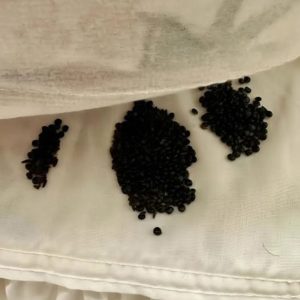But feet – the sneaky messenger of the cardiovascular system –
are one of the first in your body to send early warnings fo
r serious conditions like clogged arteries and heart disease.
When it comes to your health, your feet might be telling you more than you think.
Often overlooked, your feet can actually signal serious cardiovascular issues,
such as peripheral artery disease (PAD) and coronary artery disease (CAD)
– two forms of atherosclerosis, where plaque buildup restricts blood flow in the arteries.
What is PAD?
Peripheral artery disease is a condition where narrowed arteries reduce blood
flow to the limbs, most commonly affecting the legs and feet. This condition
occurs when plaque – a mixture of fat, cholesterol, and other substances
– builds up in the arteries, causing them to stiffen and narrow, limiting blood flow.
How PAD affects the feet
WebMD reports that your feet can provide the first signs of PAD through symptoms like:
Cold feet: Poor circulation makes it hard for warm blood to reach your extremities, causing persistent cold feet, even in hot weather!
Slow-healing wounds: Minor cuts or blisters may take an unusually long time to heal, indicating insufficient blood supply.
Pain while walking: Aching or cramping in the feet and legs during physical activity, which subsides when resting.
Discoloration: Feet may appear pale, blue, or have a purplish hue due to reduced blood flow.
Ignoring PAD symptoms can lead to severe complications, including critical limb ischemia, which may result in infection, gangrene, and even amputation if left untreated. Moreover, having PAD often suggests that atherosclerosis is affecting other vital arteries, including those leading to the heart and brain.
What is CAD?
Coronary artery disease is a type of atherosclerosis that affects the arteries supplying blood to the heart. When these arteries become clogged with plaque, the heart receives less oxygen-rich blood, increasing the risk of heart attacks.
Surprisingly, CAD can also show symptoms in the feet:
Swelling (edema): Poor heart function can lead to fluid retention, causing swelling in the feet and ankles.
Tingling or numbness: Decreased circulation may result in pins and needles sensations in the toes.
Skin changes: The skin on the feet may become shiny and tight due to fluid buildup and poor circulation.
Foot pain at rest: Unlike PAD, CAD-related foot pain may persist even when resting, especially at night.
Brittle toenails: Poor blood supply may weaken toenails, causing them to become thick and brittle.
According to the American Heart Association (AHA), “children and youth are increasingly at risk for CAD. So, preventive measures taken early in life can have greater lifetime benefits.” Healthy lifestyles – managed by good nutrition, weight management and physical activity – “will delay the progression of CAD, and there is hope that it can be improved before it causes further health problems.”
And, AHA warns that if you have PAD or CAD, chances are very high that you have the other.
Give PAD and CAD the boot
Prevention is key when it comes to avoiding serious complications from atherosclerosis-related diseases. Here are some ways to protect your feet and overall health:
Get moving: Exercise helps improve circulation and prevent plaque buildup in your arteries. The Centers for Disease Control recommends adults aim for 30 minutes of moderate activity like brisk walking or swimming each day.
Eat heart-healthy foods: Focus on a diet rich in fruits, vegetables, whole grains, and lean proteins. Cut back on processed foods and unhealthy fats.
Butt out: Smoking narrows your blood vessels and worsens circulation, making it a major risk factor for both PAD and CAD.
Take it easy: Chronic stress can contribute to high blood pressure and heart disease. Practice relaxation techniques like meditation or deep breathing.
Not so sweet: If you have diabetes, keeping your blood sugar under control is crucial in preventing complications in your feet and cardiovascular system.
Regular check-ups: If you have risk factors like high blood pressure, diabetes, or a family history of heart disease, regular visits to your doctor can help catch problems early.
Your feet can provide valuable clues about your heart health, and paying attention to them could help you detect problems before they become serious. Whether it’s cold feet, swelling, or cramping, these signs shouldn’t be ignored.
Were you surprised to learn how closely connected the feet are to our hearts? Please let us know what you think and then share this story with your friends so they, too, will know what to look for!





